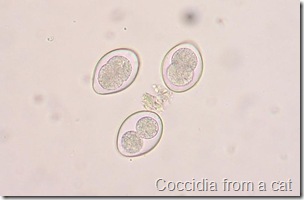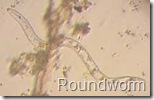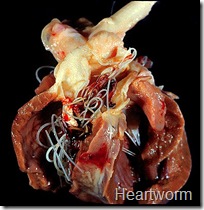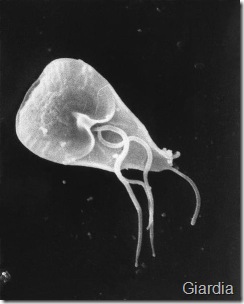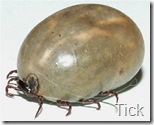Cat Parasites – does your cat or kitten have them?
Prevalence
In China, for instance, a study found that 41.39% of cats had intestinal parasites. 2.78% had toxoplasma-like oocysts. Hookworms were present in 3.06% of the cats (360 cat faeces were analysed). Toxocara cati was the most prevalent species of parasite detected in 17.78% of cats. Worms in cats and kittens are very common. We know that the cat flea is incredibly common. Full-time indoor cats can get fleas even though they have no contact with prey. This is because people or other animals can bring fleas into the home.
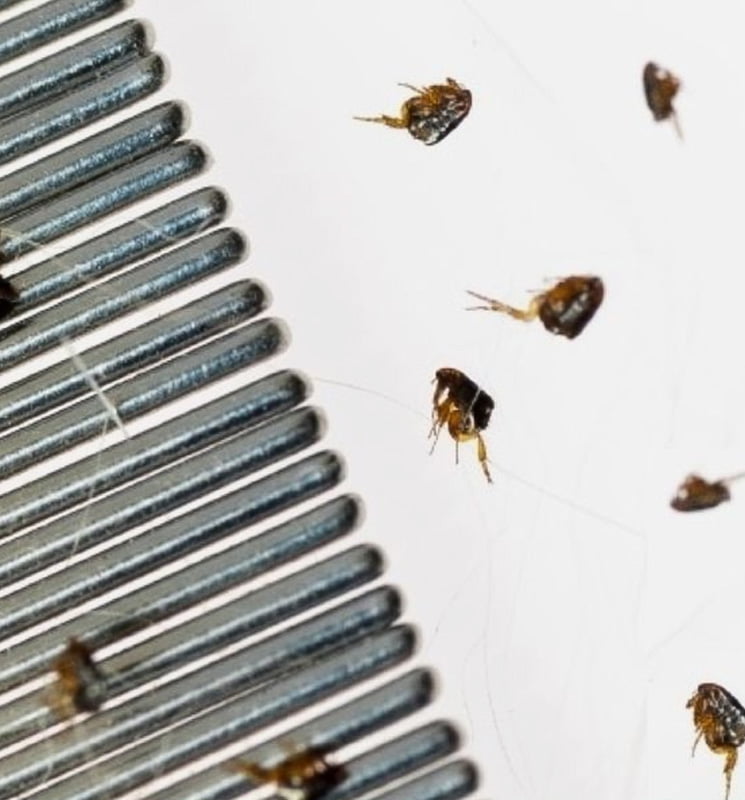
Another study on European domestic cats published in 2014, found that overall, of 1,519 domestic cats, 50.7% had at least one internal or one external parasite species. Ectoparasites were found in 29.6% of cats. The most common identify species was Otodectes cynotis (the ear mite) at 17.4% followed by fleas at 15.5%. Endoparasites were identified in 35.1% of cats including gastro-intestinal helminths in 25.7% of cats. They concluded that the presence of parasites in domestic cats in Europe “is not a rare event”. And they decided that multi-parasitism (more than one species of parasite) in domestic cat was significantly greater than expected by chance. Some individual cats are more prone to infestation due to common risk factors.
For the most common parasite, the ear mite, the age of the cat is a known risk factor. In Greece 25.5% of owned cats had ear mites. 40% of kittens up to 6 months from urban areas had ear mites. 53.3% of stray cats in Italy (sample size 1,087) were infested with ear mites.

A survey conducted in the south of France found that 30% of cats coming into a veterinary clinic were infested with ticks. Although data for tick infestation in cats is rare. In Belgium, the species of tick which infested cats was most likely to be Ixodes ricinus (80.1%).
The prevalence of fleas on cats ranges from 12% to 70%. In Spain, Germany and Austria, infestation rate has been observed to be more than 70%. There are seasonal variations with lower prevalence in winter at 12% compared to spring or summer at 21%. Fleas are more common in multi-cat households. This is common sense because one cat transmits fleas to another. They found that more than half of infested cats were not treated with a flea treatment over the previous year. Comment: this indicates, sadly, a very careless approach to managing fleas. I’ve always said that cat owners should flea comb there cats at least once daily around the shoulders and neck and at the base of the tail. This should be an ingrained habit and a distinct part of the interactions between human and cat in all households.
Three species of fleas are commonly identified in cats Ctenocephalides felis, C. canis and Pulex irritans. There is a preponderance of infestations by the species C. felis felis which is identified in almost all flea-infested cats.
The cat lungworm has an infestation rate in Germany of 6%. In previous studies it’s prevalence in Europe varied between 0.5% and 3%. Initially the reported infestation rate is 8.5%-17.6%. In Portugal the infestation rate varies between 12.4% and 17.4% according to a study. Albania had the highest rate in Europe at 43.1% as per analysis of 58 faecal samples.
Coccidia are a tiny single-celled parasite that lives in the wall of a pet’s intestine. How prevalent is it? In Germany a study found that the prevalence was up to 46.3% for the coccidia species Cystoisospora spp. It is as high as 46.3% for C. rivolta in Portugal in stray cats.
The study found that Toxoplasma gondii oocysts shedding is very low in owned cats. A study of 24,106 cats found 0.11% of cats with Toxoplasma gondii oocysts.
General endoparasites faecal examinations rarely find tapeworms which is due to the poor sensitivity of coroscopy for the detection of cestodes. Based on this method of detection prevalence did not exceed 5% throughout Europe.
Overall, the prevalence of endoparasites of cats in Europe has varied between 20% and 40%. There is a higher prevalence in shelters and in stray cat varying between 33% to 100% in some studies. Toxocara cati (the feline roundworm) is usually the most common helminths diagnosed with infestation rates ranging from 4% to 35%.
Kittens are particularly susceptible to parasites due to a weaker immune system and are likely to have some parasites internally or externally. Roundworms are very common apparently in young kittens as is the single cell protozoan, coccidia. For those of us who flea comb regularly (our cat!) the common flea is the one we know and admire/hate :). The cat flea is very robust and pound for pound the world’s best jumper (back onto the cat…).
This is an overview page pulling together other posts and adding where necessary.
Listing some parasitic species
What Are Parasites?
They are organisms that live in or on another organism (including people) and takes nourishment from the host. Accordingly, a parasite cannot live independently. They invade the host animal living off the nutrients that the host has ingested.
This results in the host losing important nutrients than can affect the function of organs.
Kittens are susceptible to a wide range of parasites.
How Can We Tell if Our Cat has Parasites?
Internal parasites can be checked by a fecal exam of the cat’s stool. External parasites can be checked by visual inspection.
Often veterinarians play safe and give a dewormer for internal parasites as a precaution. External parasites are treated with drugs or more simply by physical removal.
Internal Parasites
 Roundworms – Most common parasite affecting kittens as it can be transmitted in the colostrum (first milk) from their mother when nursing. Larval stages inhabit body tissue. Larvae mature in the gastrointestinal tract causing serious illness. There are effective dewormers. See: Cat Deworming Treatments
Roundworms – Most common parasite affecting kittens as it can be transmitted in the colostrum (first milk) from their mother when nursing. Larval stages inhabit body tissue. Larvae mature in the gastrointestinal tract causing serious illness. There are effective dewormers. See: Cat Deworming Treatments- Tapeworms – I wrote a post on my blogger site about feline tapeworms (new window).
- Coccidia – a single celled parasite living in the gastrointestinal tract. Picked up by oral contact with the faeces of another cat or dog. Causes inflammation of the tissue of the intestine. Causes bad diarrhoea, sometimes bloody. Loss of fluids and electrolytes cause illness. Can be eliminated with drugs. See picture above.
- Giardia – another single celled parasite that colonises and reproduces in the small intestines of several vertebrates, causing giardiasis (diarrheal disease). The parasite lives in the intestine, and is passed in the stool. Usually transmitted from cat to cat through contaminated drinking water. Can cause serious diarrhoea. Treated with drugs. There is a vaccine too.
 Heartworm – another one of the cat parasites and a small thread-like worm, a parasitic roundworm. The definitive host is the dog but it can also infect cats. It can result in serious disease to the host. The larvae is injected into the cat by a mosquito bite but only a low percentage of cats end up with adult heartworms in lungs and heart. Rare disease affecting adult cats. In the USA, feline heartworm disease is most likely to occur in the southeast. A symptom is a chronic cough. Preventative drugs can be administered but they are often not advised on a risk/detriment basis. The worm usually dies of its own accord after 2 years or so. I made a post on this: Cat Heartworm (new window).
Heartworm – another one of the cat parasites and a small thread-like worm, a parasitic roundworm. The definitive host is the dog but it can also infect cats. It can result in serious disease to the host. The larvae is injected into the cat by a mosquito bite but only a low percentage of cats end up with adult heartworms in lungs and heart. Rare disease affecting adult cats. In the USA, feline heartworm disease is most likely to occur in the southeast. A symptom is a chronic cough. Preventative drugs can be administered but they are often not advised on a risk/detriment basis. The worm usually dies of its own accord after 2 years or so. I made a post on this: Cat Heartworm (new window).- Lungworm (new window).
External Parasites
- Ear Mites – I have a post on these horrors: Cat Ear Mites (new window)
- Fleas – Our most commonly occurring problem, I think. I have made several posts on these monsters: Cat Flea Treatments, Cat Flea Life Cycle, Flea Treatments Can Kill, Cat Skin Rashes (referred to in passing – new window), Ragdoll Cat Skin Scabs.
 They can cause serious skin irritation and an allergic reaction. As they suck blood, if the infestation is bad a kitten can become anemic. Fleas can transmit the tapeworm (see above). The best treatment is proactive and preventative. One step is Food Grade Diatomaceous Earth.
They can cause serious skin irritation and an allergic reaction. As they suck blood, if the infestation is bad a kitten can become anemic. Fleas can transmit the tapeworm (see above). The best treatment is proactive and preventative. One step is Food Grade Diatomaceous Earth. - Mange mites – another post: Feline Mange (new window).
- Cat Ringworm. This is a fungus actually so should not be on this page but is mentioned nonetheless for completeness. Most cats will self-cure. I have administered thrush cream to a stray cat I feed and it worked fine. He gave me ringworm (it is zoonotic) so the cream was for me. We shared it.
- Ticks – please see an earlier post: Cat Parasite. See picture above right. They are blood suckers. Ticks are quite large and easy to see attached to the skin. They can transmit serious diseases such as Lyme disease and Rocky Mountain spotted fever and cause skin irritation. Permanent indoor cats shouldn’t be infested.
- More: Cat and Dog Parasite Pictures (new window).
Flea treatments on Amazon. A regular flea combing is in my opinion by far the best treatment as it is the most effective and safest. Use chemicals i.e. insecticides with great caution please. Never use dog treatments on cats for example. Always read the instructions and labels. Don’t overdo treatments.
Cat parasites – Photos: Cat flea (Ctenocephalides canis) Wikimedia Commons – Author: Outesticide (new window). Tapeworm – Wikimedia Commons – Author: Salvadorjo. Coccidia – Wikimedia Commons –Author: Joel Mills. Giardia – Wikimedia Commons – Author: Janice Carr. Cat Parasites – Heartworm – I am not sure about the veracity of this image. Source unknown, please advise. Tick – bloated tick © Allies Dad creative commons license. One of the foulest cat parasites.
Cat Parasites to Cat Health Problems
Sources: Book 5 of Medical References and Methods plus those referred to in the linked posts.


